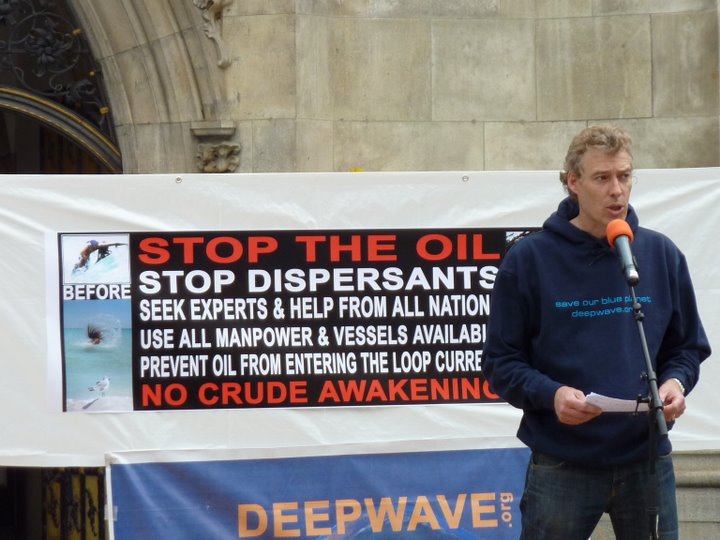Noise
“The Silent World”
Jacques Cousteau once called the oceans “The Silent World”. Today we know that he was wrong: most marine creatures are anything but mute.
Everywhere underwater, sound is used to communicate, hunt, search and find. Cousteau’s world, however, was silent in comparison to ours, because the oceans have become considerably louder – and this is due to us humans.
Whether it’s shipping traffic, seismic surveys of the oil and gas industry, the construction of wind farms or the blasting of munitions from past wars, there is a pandemonium underwater in many places, making life increasingly difficult or impossible for marine creatures. Looking at a marine spatial planning map of the North Sea, the shallow sea on our doorstep is more like an industrial area than the tranquil, unspoilt wilderness we still think the seas are. The development plan of the offshore wind power industry, for example, envisages the construction of turbines on large areas. This may be well-intentioned for the energy revolution and the fight against climate change, but few people know that the construction of these wind power plants generates noise that is so loud that it can kill. The main sufferers are those animals that have particularly sensitive hearing, first of all the harbour porpoise that inhabits our domestic waters.
Studies have shown that harbour porpoises flee up to 20 kilometres once the construction of a wind turbine has started. The foundation of the turbine is driven deep into the sea bed with a gigantic hammer. It is not surprising that, being an animal essentially relying on its hearing, it immediately takes flight. However, little research has been conducted to date into the consequences for fish, fish larvae, crustaceans or molluscs that cannot actively swim away. Anyway it is certain that massive sound can impair important biological processes in a large number of organisms. Technical alternatives have long been available that cause less noise, such as gravity foundations or methods of vibrating the huge pipes into the seabed instead of hammering them. Just because these methods and their further development involve higher costs, the industry has not yet implemented them completely.
Shipping
The same applies to the shipping industry. The large transport vessels produce continuous sound under water around the world, comparable to the noise on a busy motorway. Continuous noise induces stress, not only for humans. Marine animals exposed to it suffer more and more from this noise, from which they cannot escape to quiet retreat areas, not even in the protected areas actually designated for this purpose, as these protected areas themselves are not protected from interference by industry, tourism and military manoeuvres.
In addition to the exposure to permanent stress, the noise also disrupts a biological function that is crucial to survival: for harbour porpoises and other marine mammals, intact hearing and a naturally noisy environment are vital for orientation by echolocation. Their hunting and communication are based entirely on the use of sound. Anywhere we humans create too much noise, it becomes not merely uncomfortable. A harbour porpoise that cannot hear anything because it is simply surrounded by too much noise or even becomes deaf is not able to survive. It starves to death because it can’t catch any prey.
Demolition of ammunition dumps
Technologies for more quiet ships already exist for quite some time, but their use is lagging behind and hardly supported politically because there is a lack of awareness of this type of threat. As is the case with the ammunition dumps from the World War II. In the North and Baltic Seas, there are still about one million tonnes of old bombs lying on the seafloor or buried in the sea bed. At that time, they were simply thrown into the sea for “disposal”; today they are a ticking time bomb. If such old bombs are found, they have to be removed with great effort – often by detonating them.
Only recently this happened off the island of Fehmarn. There, the German Navy, together with NATO partners, blasted sea mines – even within protected areas and at the most sensitive nursing time of harbour porpoises; without the use of noise mitigation techniques and without the participation of the responsible nature conservation authorities. Political will is required here and we all have to do our part to ensure that this form of destruction of the oceans is taken seriously before it is too late for the animals which call the seas home.
Seismic air guns
The noisiest human activities, however, have not yet been mentioned: so-called seismic air guns are used during the exploration of oil and natural gas. Their detonations are used to scan the sea floor in the quest for deposits. However, the resulting noise can kill a porpoise – or a human being – directly.
So our lifestyle and our greed for fossil fuels also contribute directly to the noise of the seas. The only good thing with noise is that, unlike the other threats to the oceans, it is easy to get rid of: You turn off the source of the noise and it’s quiet…
Guest article by Fabian Ritter, marine protection expert at WDC
News about the noise problem in the oceans was presented at the BfN conference
International Conference hostet in Berlin on the 22 and 23 of November 2018:

